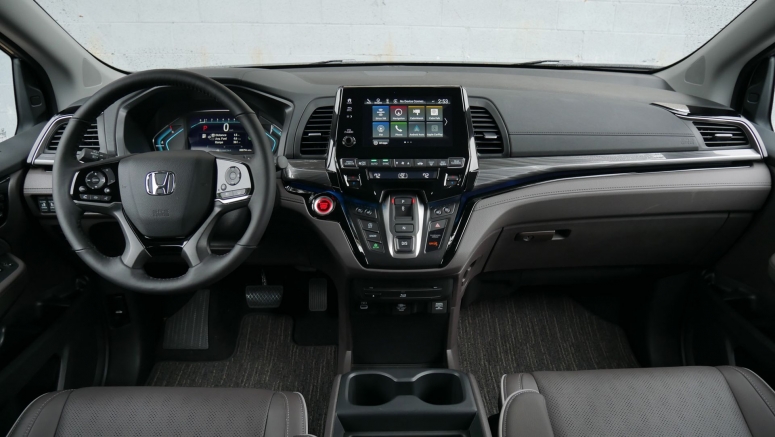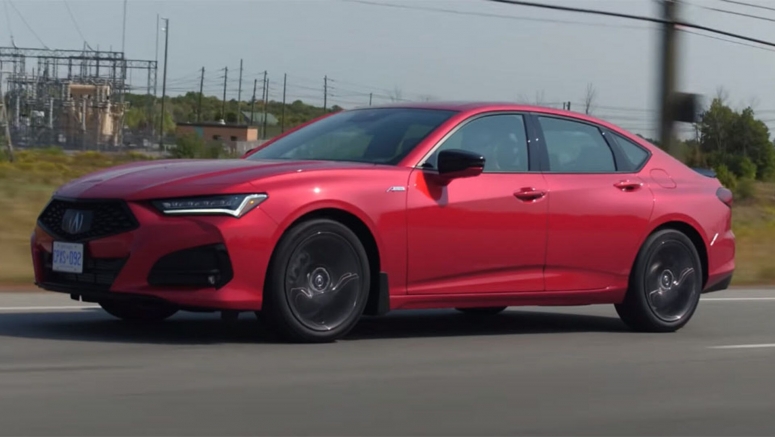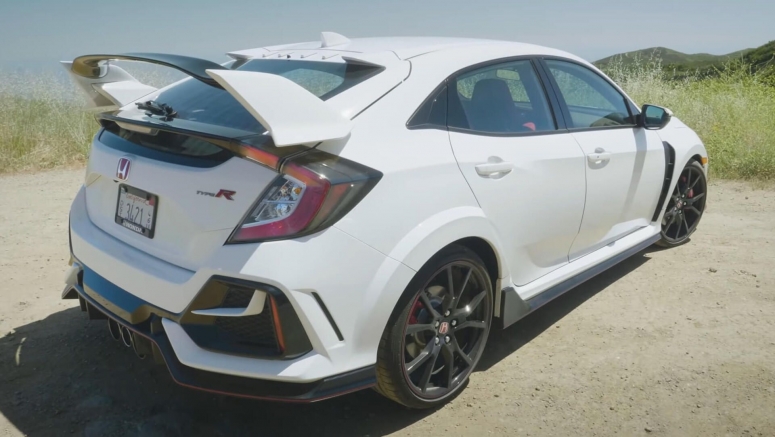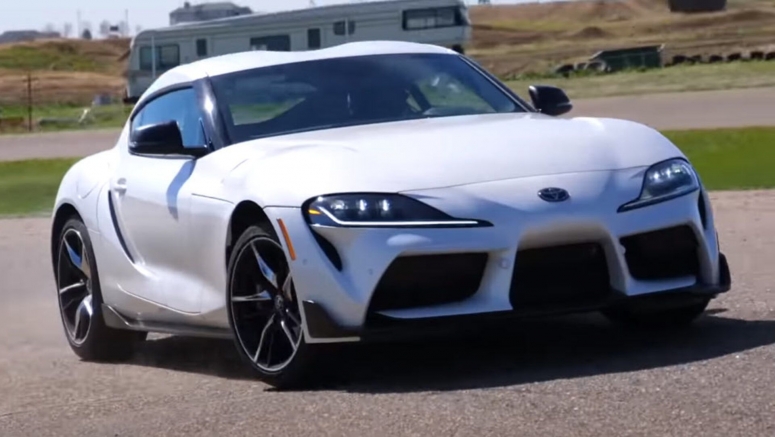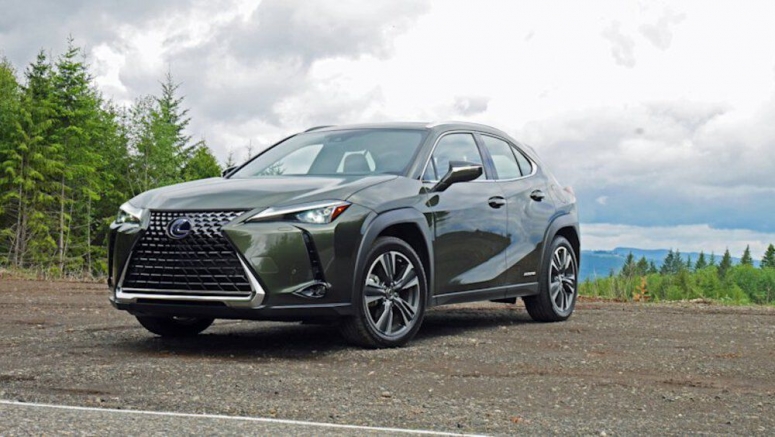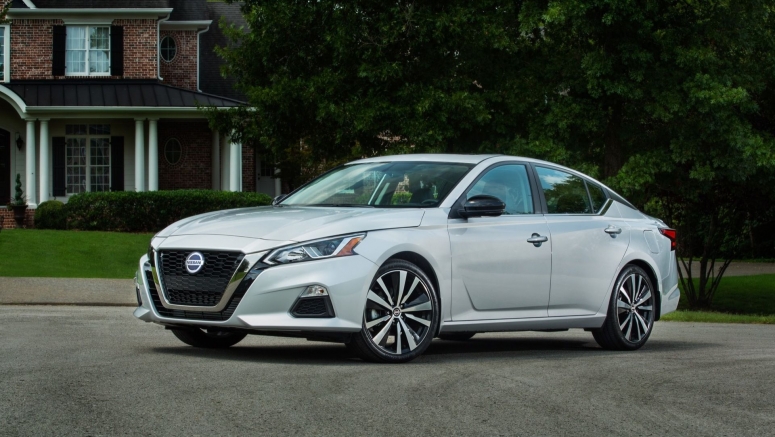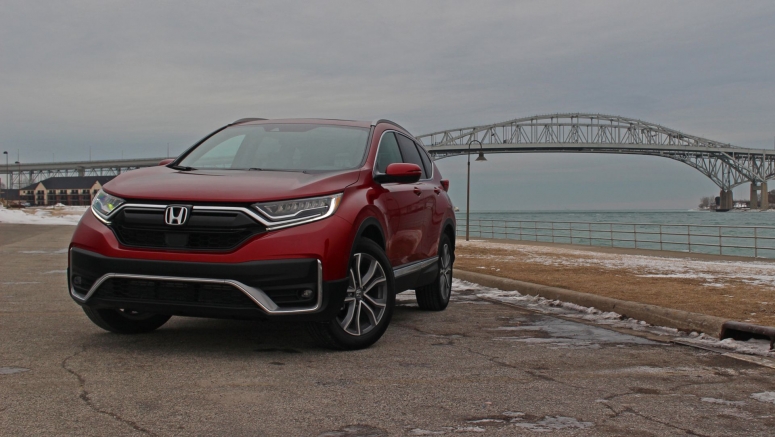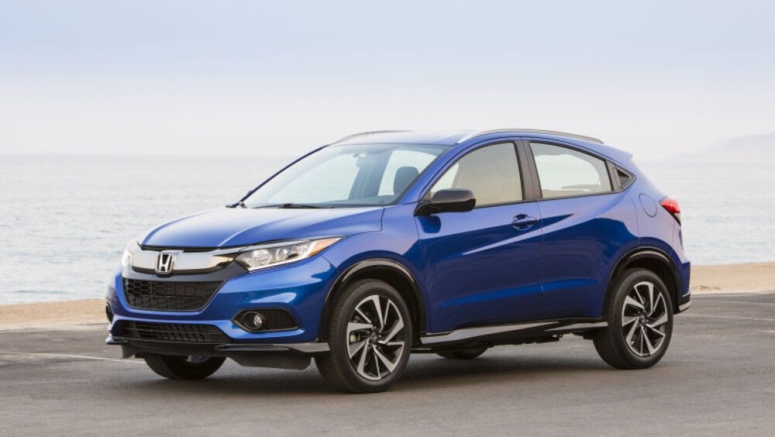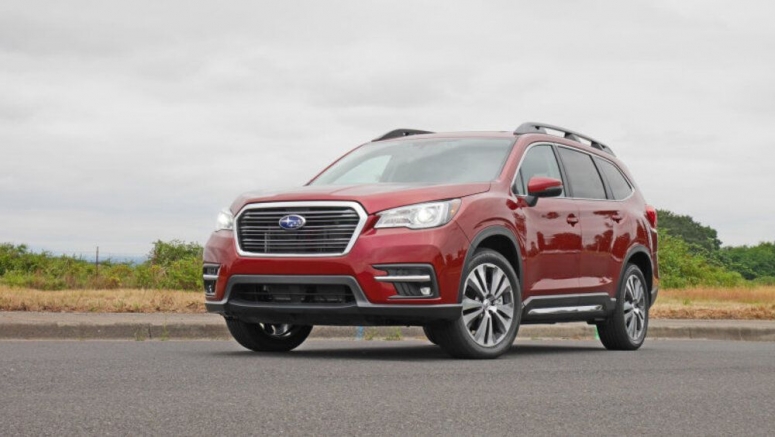
The 2020 Subaru Ascent is a full-size, three-row crossover that caters to the Subaru faithful, while welcoming new customers whose larger families might have precluded them from something with just two rows. It looks a lot like a bigger version of the Outback, and, like it, seeks to satisfy active, outdoorsy, dog-loving customers wanting something to take them to off-the-beaten-path places to play with standard all-wheel drive, ample ground clearance and sturdy, functional roof rails. Subaru even went so far as to introduce the Ascent with a pack of eight golden retrievers to prove the point to dog owners. So whether you're heading to the ski hill, campground or taking the kids to soccer practice, the 2020 Ascent offers a practical, capable, no-frills way to get people — and pets — where they need to be.
While it's not our favorite three-row crossover in this segment, it's near the top, and it could be the perfect vehicle for a wide variety of customers. It's roomy, capable and safe, but it's also a bit plain and there's only one powertrain option, a turbo-four paired to a CVT that's less powerful than those of competitors. If you're considering the Ascent, do yourself a favor and take a look at the practical but characterful Kia Telluride or Hyundai Palisade. You just may — or may not — find one of those meets your adventurous needs while making a stronger emotional impression.
What's new for 2020?
Pricing remains the same for 2020, but the Ascent has a couple new tricks up its sleeve. Across the range, it gets Rear Seat Reminder as standard, to help prevent you from leaving a child or pet behind in the vehicle. Premium, Limited and Touring trims will come equipped with "one-touch interior illumination on/off controls." The Touring trim also adds new power-folding side mirrors with integrated turn signals.
What are the Ascent's interior and in-car technology like?
From the driver's seat, the Ascent's packaging displays Subaru's pragmatic philosophy to car design. All the gauges are easy to see and read at a glance, knobs and buttons are easy to locate — both those of the software-based touchscreen infotainment system and the physical ones on the steering wheel and center stack. We were able to find a good seating position, thanks in part to the manually tilting/telescoping steering wheel, but we have a feeling that smaller drivers may find the driving position more awkward than larger drivers. All but the base trim level are available with second-row captain's chairs, and all but the highest Touring trim can be had with a second-row bench for a total of eight seats. Fun fact: There are a total of 19 cup holders in the Ascent.
The base infotainment system is a 6.5-inch touchscreen, but moving up to the Premium trim bumps that up to an 8.0-inch unit. The image quality is crisp, the colors bright, and simple tasks like selecting a radio preset are made easy with big virtual buttons. Accomplishing more in-depth tasks is more cumbersome, however, as settings can be in odd places within various menus. Generally, it's better than many competitors (Honda and Mazda, for instance), but not as streamlined as that of Hyundai and Kia. Apple CarPlay and Android Auto are standard, as are Sirius XM satellite radio (subscription required), HD radio, and a number of integrated apps. GPS navigation is available in all but the base trim and standard on the Touring, but although we generally prefer to use our trusted smartphone navigation apps, there are times when out of cell coverage that an in-car nav is beneficial.
How big is the Ascent?
A 6-foot passenger will have plenty of room in the second row, which is adjustable for legroom and seatback angle. On upper trim levels, buyers can choose between a pair of captain's chairs or a three-passenger bench. We tested both setups and walked away thinking they were just about equal in terms of comfort. Third-row passengers are treated better in the Ascent than in many competitors (Toyota Highlander, Mazda CX-9 and Ford Explorer in particular). If the middle-seat occupants are willing to slide their seats forward a bit, there's adequate legroom for a 6-footer in the way back to sit comfortably for a fair bit of time. For kids, this means even more comfort and space.
As for cargo, the Ascent offers 17.6 cubic feet of cargo space behind the third row, which is mid-pack for this segment. It's more than the Mazda CX-9 (14.4 cubic feet), Toyota Highlander (16.0) and Honda Pilot (16.5), but less than the Hyundai Palisade (18.0), Ford Explorer (18.2) and Kia Telluride (21.0). Max cargo volume behind the first row of the Ascent is 86.5 cubic feet, putting it behind the Explorer (87.8) and Telluride (87.0), but way ahead of the CX-9 (71.2), and slightly ahead of the other aforementioned competitors. The Ascent is also pretty boxy, which is always a good thing when stuffing large items inside, and comes with big, functional roof rails to load whatever doesn't fit inside.
What's the Ascent's performance and fuel economy?
The Ascent's sole powertrain offering is a 2.4-liter turbocharged four-cylinder engine, arranged in Subaru's signature boxer (horizontally opposed rather than a V or inline) configuration. Power is sent to all four wheels via a continuously variable transmission (CVT). It provides 260 horsepower and 277 pound-feet of torque – we've found it feels just as quick in regular driving as its competitors, but know that their greater outputs do result in quicker 0-60-mph times. That said, owners living at higher elevations (as many Subaru owners do) will appreciate the lasting power from the turbocharger, which keeps the Ascent from feeling breathless at heights where naturally aspirated engines start to lose power. In other words, four cylinders are not necessarily lesser than six, and it even manages the same 5,000-pound towing capacity of most rivals.
All Ascents use all-wheel drive, so the deciding factor in the difference of fuel economy comes down to wheel size. With 18-inch wheels, the Ascent gets 21 mpg city, 27 mpg highway and 23 combined mpg. Step up to 20-inch wheels, and you sacrifice 1 mpg across the board. That's about on par with, and in some instances better than, the competition. For reference, the Honda Pilot and Hyundai Palisade get 21-23 mpg combined, while the Mazda CX-9, Ford Explorer and Toyota Highlander get 23-34 mpg combined.
What's the Ascent like to drive?
Seven-passenger crossover buyers aren't likely to make ultimate purchase decisions based on driving dynamics, but Subaru has still baked some fun into the Ascent package. Steering is predictably light — much lighter than the Mazda CX-9, which serves as the fun-to-drive gold standard in this class — but offers a quick ratio and a reasonable amount of road feel. Overall, the Ascent feels surefooted and secure, and rides comfortably over harsh pavement without being sprung so softly that it wallows through corners.
There are no sport modes to fiddle with in the Ascent, just a standard baseline setting, but the single setup feels well thought out and sorted. There's plenty of punch from Subie's turbo-four. There were a few times we caught the engine flat footed on our drive and had to wait a second for the turbos to spin up, but we ended our drive thinking its output is sufficient. We were able to tow an Airstream trailer just shy of the Ascent's maximum of 5,000 pounds, and we found that it had no problem getting the load up to speed and back down again. The CVT mimics the feel of a traditional automatic transmission, for the most part. It works well, and doesn't get in the way of a good driving experience.
What more can I read about the Subaru Ascent?
2019 Subaru Ascent First Drive Review | A three-row do-over
Our first impressions of the Ascent when it was new for 2019. Among more details about its design and engineering, we found it was immediately clear that Subaru had learned from its mistakes with the Tribeca.
2019 Subaru Ascent Drivers' Notes Review | Subaru redux
A roundtable discussion from several Autoblog editors assessing the Ascent's merits and shortcomings after a week of real-world driving impressions.
2019 Subaru Ascent vs. 2018 Mazda CX-9: Driving two class leaders side-by-side
We drove these two likable three-row competitors back to back to more specifically compare the driving experience between the two. From our conclusion:
"Count 'em up and you'll see that the Subaru Ascent won three out of our five categories. By that measure, it's the winner of this comparison. But, as is so often the case, the reality is more nuanced than that."
2020 Toyota Highlander vs other 3-row crossovers: There can only be one!
Here, we look at the specifications of some of the leading three-row crossovers to compare pricing, dimensions, fuel economy, capabilities and capacities.
What features are available and what's the Ascent's price?
The 2020 Subaru Ascent starts at a base MSRP of $33,005, including the $1,010 destination fee. The base Subaru includes as standard features all-wheel-drive, 18-inch wheels, projector beam halogen headlights, black side mirrors, body-color door handles, a 2,000-pound towing capacity, Subaru's EyeSight safety system (more on that in the safety section, below), adaptive cruise control.auto-on/off wiper-linked headlights, tri-zone climate control, six-way manually adjustable driver's seat, a second-row bench seat, second- and third-row 60/40-split flat-folding seatbacks, cloth upholstery, a 6.5-inch infotainment touchscreen, Apple Carplay, Android Auto and satellite radio.
For a more in-depth look at the extra features included with the Premium ($35,405), Limited ($40,355) and Touring ($46,055) trim levels, check out this breakdown of features, pricing and specs here on Autoblog.
What's the Ascent's safety equipment and crash ratings?
In addition to the usual seatbelts, airbags and traction control, the Subaru Ascent includes a number of standard safety features as part of its EyeSight driver assist technology system. These include automatic emergency braking, lane departure warning, and Eyesight Assist Monitor, which is a basic head-up display that uses colored lights to visually alert you to system warnings. The 2020 Ascent also includes a rear seat reminder as standard. Blind-spot detection, rear cross-traffic alert, high-beam assist, reverse automatic braking and a 180-degree front-view camera are also available in higher trims.
The two major crash testing authorities have each given the 2020 Subaru Ascent their highest marks. The Insurance Institute for Highway Safety (IIHS) rates is as a Top Safety Pick +, earning its highest "Good" rating in all crash tests, "Superior" front vehicle-to-vehicle crash prevention, and "Good" LED headlights on the Limited and Touring trims — the halogen lights on the base and Premium trims got a score of "Poor," which is typical for base lights. The National Highway Traffic Safety Administration (NHTSA) gave the Ascent its highest five-star overall safety rating, with five-star ratings in its various crash test categories. Featured Video:


